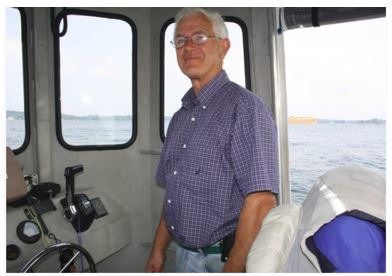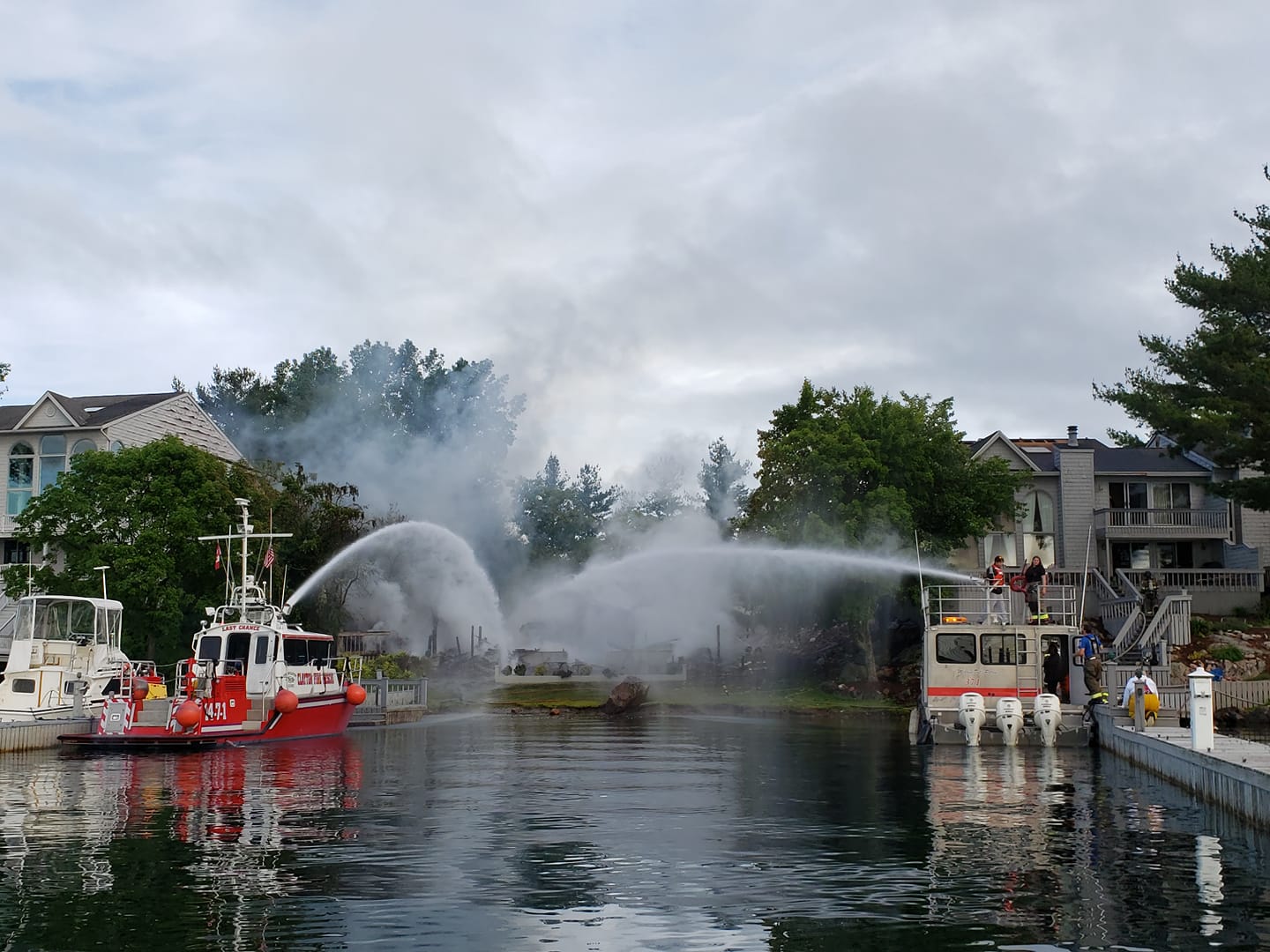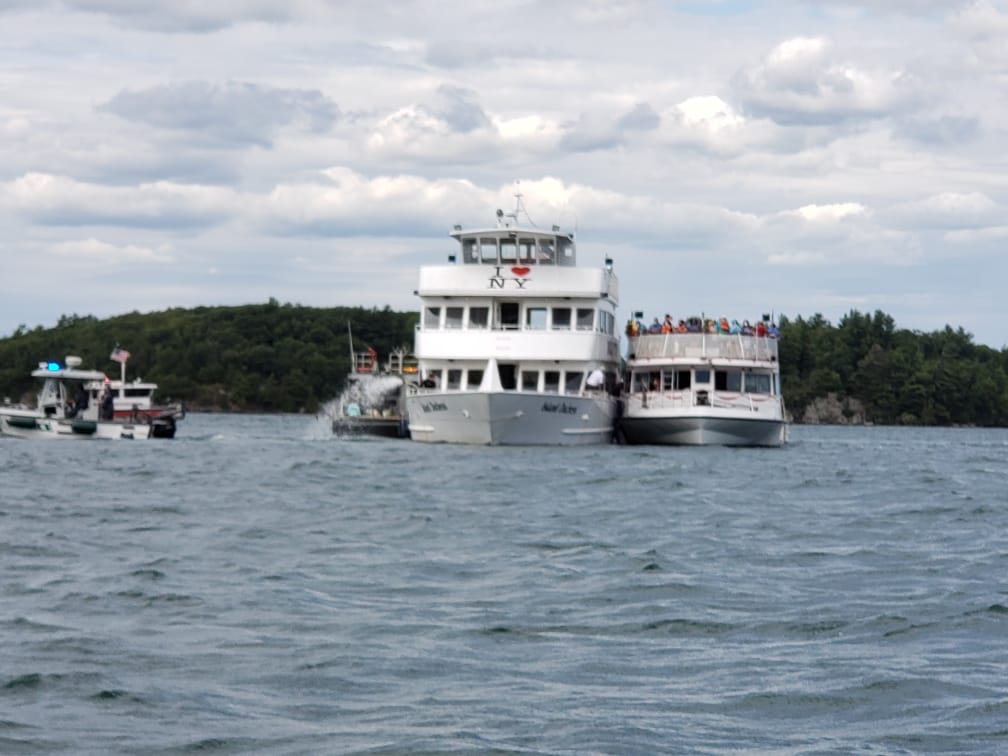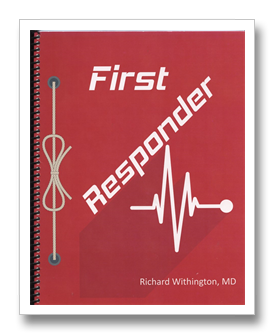Editor's note: Dr. Richard (Dick) L. Withington is a retired orthopedic surgeon and is best known on the River for his rescue work, with his boat “Stormy”. Each winter Dr. W. writes articles that provide his special view of rescues in the Thousand Islands – and we thank him for his River rescue work as well as bringing us up-to-date each year.


Events of 2020!
The first major event was the structure fire at Tennis Island in June. This was an early morning event and was originally thought to be a boat fire. Closer observation revealed that a townhouse was afire and that it was accessible by land. The Wellesley Island Fire Department responded, as well as both Alexandria Bay and Fisher's Landing. The Alex Bay fireboat provided an aggressive attack from the water to complement the land-based attack from the trucks. There was damage to the building next door, and the building with the original fire was destroyed. Clayton's fireboat arrived to reinforce the water-side attack. Our deck gun delivers about 1500 gallons of water per minute, and paired with Alex Bay's boat, the water-side attack complemented the land-based attack to extinguish the fire. I know of no injuries.

Another call, to the north side of Grindstone Island, was educational and enlightening. A fire was reported from Canada as being on Grindstone Island after a lightning strike. The weather at that point was awful. High winds and heavy rain limited visibility. It was the first time that I have started to respond to a fire call and then turned back due to weather. I waited for the worst of the storm to pass, thinking that the amount of rain would probably douse any fire, and responding would be unnecessary.

Shortly, I received a confirmation from Clayton’s fire boat, LAST CHANCE, that response was indeed appropriate and to be cautious on the approach due to electrical charge in the water at the landing. On arriving, there were several trees down, and a utility pole with a transformer was on the ground. Flames were shooting up from the exposed wires lying between two cottages.
I was warned not to touch the metal piping supporting the floating dock due to the risk of electrical shock. Live wires were in the water, and a gadget we purchased during the floods two years ago had been deployed that indicated dangerous levels of electricity in the water. Without touching the dock supports, I picked up the on-scene commander, and we took the electric-sensor out on the water to determine the extent of the risk. The alarm continued until we were about sixty feet from the dock.
Management of the fire consisted of waiting for the arrival of the utility company to shut down the power. An important factor was keeping everyone away from the charged area and watching for any extension of the fire. This was the first time we had used the electrical sensor gadget, and it reminded all of us of the importance of fire-ground safety. Thank goodness the fire department had the wisdom and forethought to equip the fireboat with this protective gear. It was a good learning experience for all of us.
Shortly after noon on a beautiful August day, my VHF radio carried an urgent call to the US Coast Guard. It was from the captain of a boat that had hit a shoal and was taking on water. When he mentioned that it was a tour boat with 134 people aboard, everything "lit up". Fortunately, there were no on-board injuries apparent, the weather was favorable with light winds and excellent visibility. There was a vigorous response by US Coast Guard, law enforcement, and fire boats from Jefferson and St. Lawrence counties. The vessel was anchored in deep water which facilitated access by the responders.

Fortunately, this was a scenario for which there had been pre-planning and prior drills. For once, the actual emergency went very much as planned. The fire departments provided additional pumps, and the owners provided an empty tour boat to evacuate passengers. They had lined up with life jackets on and easily transferred to the rescue boat. I would guess that all passengers were safely evacuated in less than 30 minutes, and none got their feet wet. It shows the value of prior planning and emergency drills.
Despite the closed border, Canada responded with emergency vessels from Rockport Rescue and a C-130 Hercules transport plane from the Canadian Forces Base Trenton, Ontario, Rescue Coordination Center. I believe a parachute delivered a pump rather than a rescue swimmer. In any event, Canada's assistance was much appreciated. In "normal years" we train together so that the border can become invisible when there is a need for mutual aid.
In the end, commercial interests and insurance companies repaired the damages, the passengers went home with some interesting stories and photographs, and the River rolls on. Thank Goodness for close calls. It could have been worse.
A day or two later there was a call for a car in the River with the driver trapped by an inflated airbag. Fisher's Landing responded and assisted in rescuing the driver through a sunroof. The car was in shallow water. I gather that an alert dock attendant was central to the rescue and recovery.
This was an unusual summer of face masks, gloves, and social distancing. There were the usual number of medical calls to the islands, but fortunately, there were no fatalities that I recall. A significant boating collision also resulted in "just a close call". Here's hoping next summer will be even better.
So, wear your mask, wash your hands, keep your distance, and get vaccinated!! Happy 2021!
By Dr. Richard L. Withington
By Richard L. Withington, MD, January 2020
Dr. Richard (Dick) L. Withington is a retired Orthopedic Surgeon and is best known on the River for his rescue work, with his boat “Stormy.” Each winter Dr. W. writes articles that provide his special view of the Thousand Islands – and we thank him for this.
His first article for TI Life, A Winter Islander, was published in January 2009. To see all of his island experiences, search TI Life under Richard L. Withington. Also be sure to see The Doctor is in, February 2012, written by Kim Lunman, writer and publisher of Island Life, a print magazine.
However, you don’t have to wait a year for more excitement… you can almost sit beside him as he jumps into his boat, “Stormy,” and heads out to one of dozens of accidents – and learn first-hand how important our life saving partners, the Clayton and Gananoque Fire Departments, the Coast Guard and the Thousand Islands Emergency Rescue Service (TIERS) are to our Thousand Islands. How can you do that? Dick Withington is the author of a simple spiral-bound book: “First Responder” published in 2016. Copies are available, but right now they are marooned on an island, but as soon as the ice thaws, the book can be purchased.

Posted in: Volume 16, Issue 1, January 2021, News article
Please click here if you are unable to post your comment.
